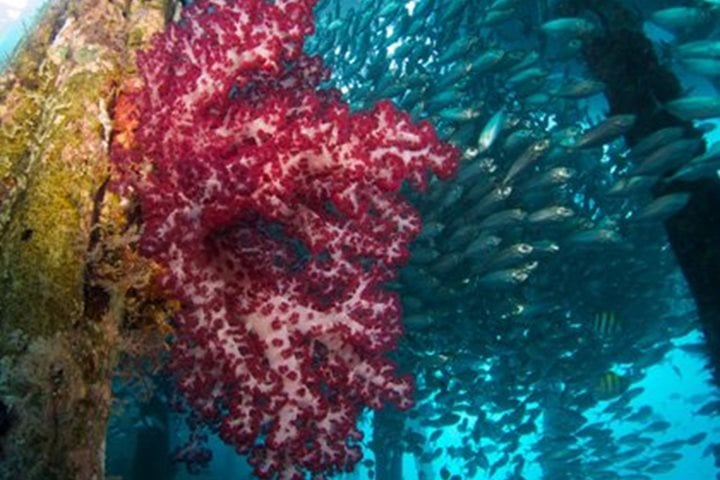The Badas Islands, pronounced almost exactly as they are spelled, do not disappoint in living up to their name. Having the National Geographic Orion anchored off such a tiny piece of tropical paradise of sand and lush vegetation of Tambelan might seem like an odd location to spend a day, unless of course you had a fleet of Zodiacs at your disposal. Directly after breakfast these nimble inflatable boats set to work, scouting the underwater landscape for the perfect site, setting up a snorkeling platform, transporting scuba divers and shuttling anyone back and forth to the ship at a whim. These craft are so versatile that one has even been converted into a glass bottom Zodiac for those that prefer to experience the underwater world and still keep dry.
For the more aquatically inclined however, there is an extensively healthy reef ecosystem to explore, giant boulders of coral that could be over a thousand years old sit just beneath the surface. Coruscating light plays on the shapes and lines of a myriad of different varieties of the slowly encrusting colonial animals. Everywhere you look there are patterns that seem to simultaneously embrace a wild chaos while adhering to an ordered structure. One truly has the raw sensation that this is a different and alien world, full of exquisite beauty, all of it just beneath the surface. Coral depends on sunlight, and a mutualistic relationship with a photosynthetic organism, known as zooxanthellae, for much of it’s energy and consequently a vast quantity of reef life can be found within the first few meters. This means that by simply floating on the surface and looking down, with a mask of course, all of this can be easily observed with minimal expenditure of effort.
Another mutualistic relationship, and one that is much easier to observe, is that of the anemone fish and their host. Anemones are cnidarians, which are in a phylum that includes corals and more notably jellies (commonly known as jellyfish). This group of creatures is known for their stinging cells, or nematocysts, that fire microscopic toxin filled harpoons to dissuade any would be predators. The anemone fish, immortalized by a certain animated film studio, have adapted to be impervious to the potentially hazardous stings and use the waving swath of tentacles as a home. The fish defend the anemone from predators that might otherwise successfully attack it while in turn gaining the protection of the stinging cells that only they are immune to. This is just one example of the fascinating and complicated world and as we continue our eastward journey, the more we learn, the more we’ll see!









